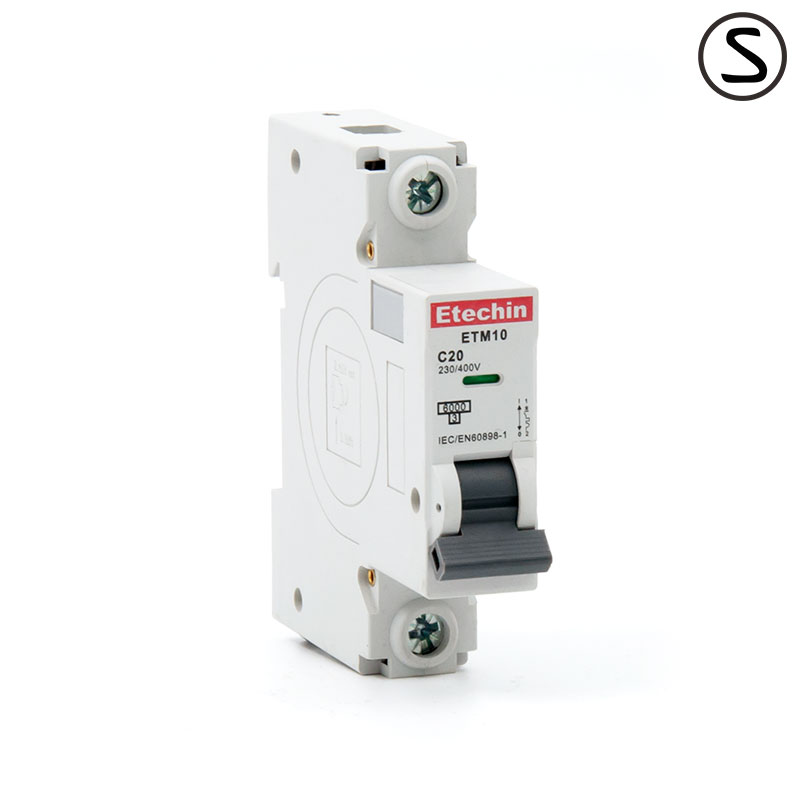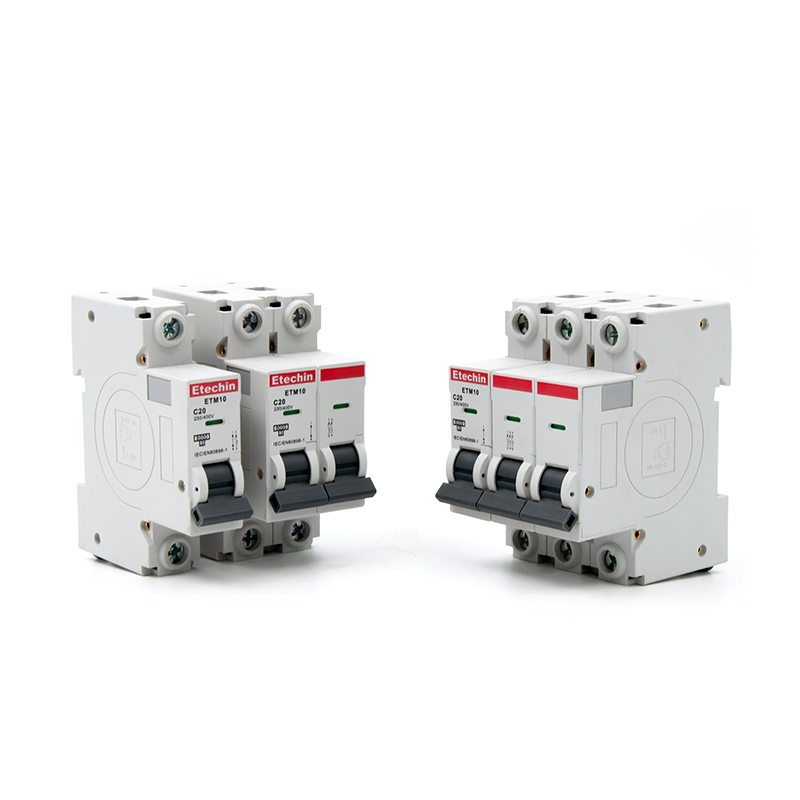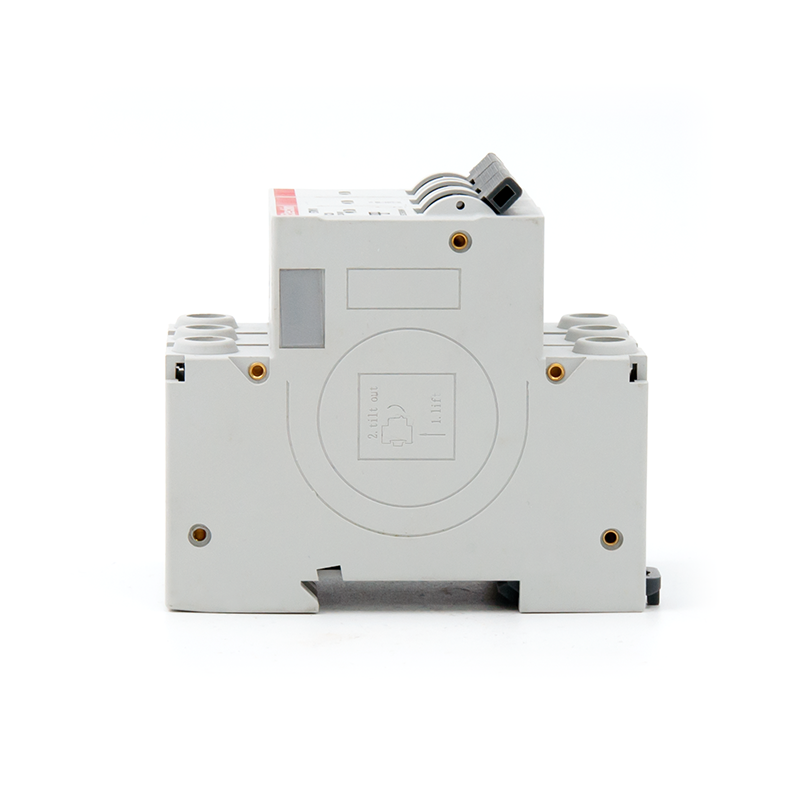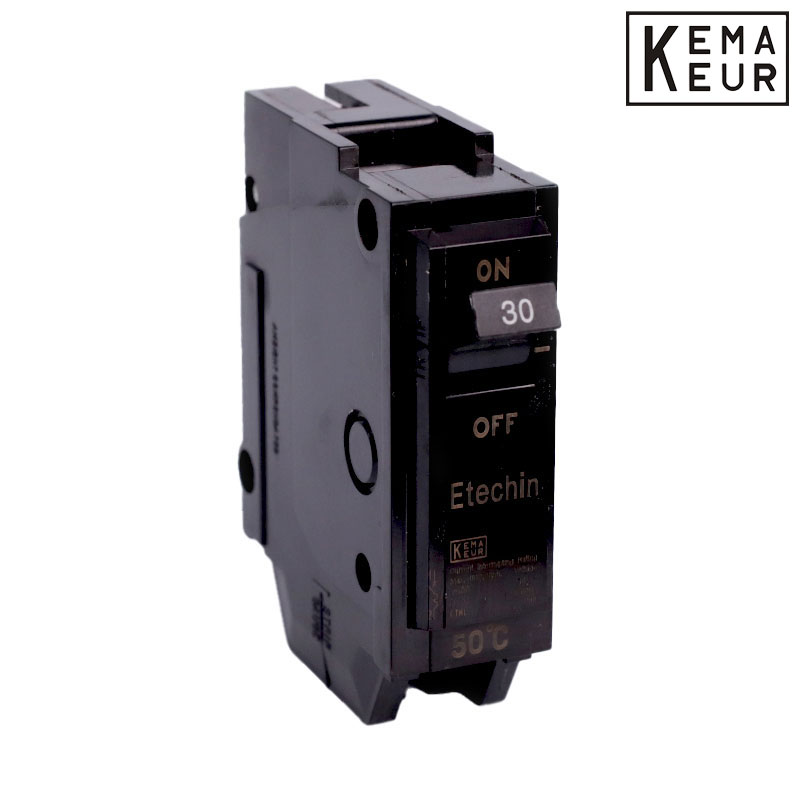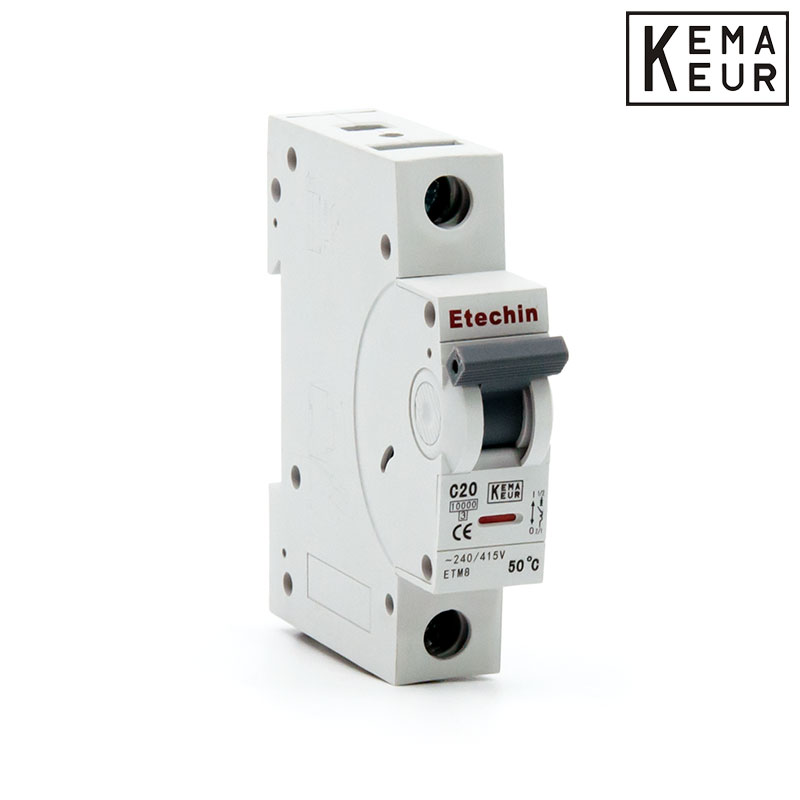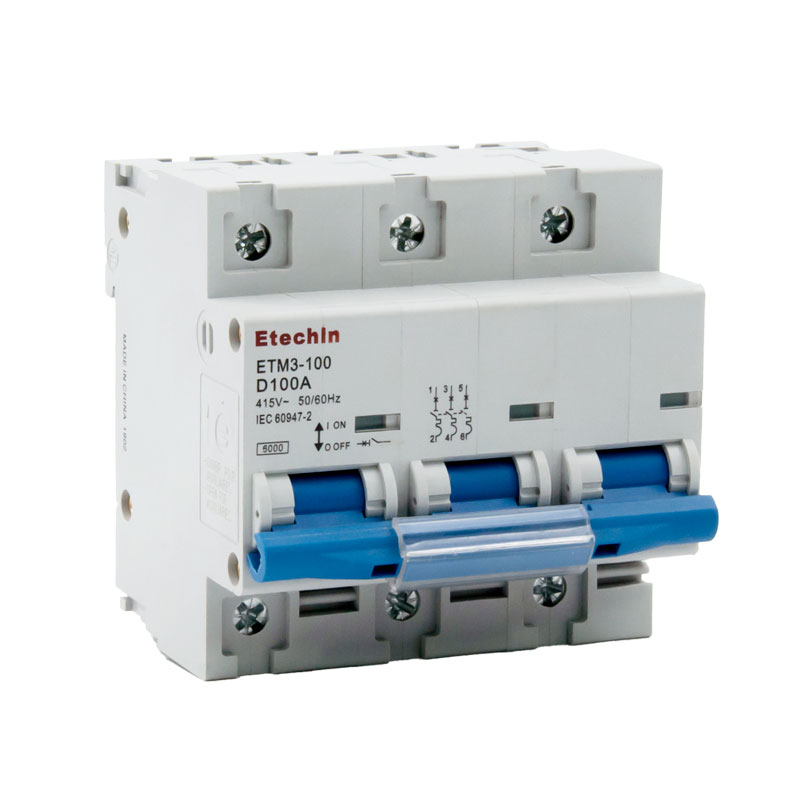1P, 2P, 3P, 4P B C D curve, MCB, ETM10, AC, miniature circuit breaker, mini circuit breaker, din rail
Products Description
ETM10 series MCB is in complied with IEC 60898-1 standard. It has the certification of Semko, CE and CB
ETM10 have 4.5 6 kilo ampere for breaking capacity.
ETM10 have already gotten the Semko CE CB certification.
Our MCBs rated current is from 1 ampere to 63 ampere and it has one pole to four poles with b,c,d curve.
Rated insulation voltage: 230V, 240V, 230 / 240V (1 Pole); 400 / 415V (2 poles, 3 poles)
As we know MCB's main functions is for overload protection and the short circuit protection the overload protection is mainly operated by bi-metal assembly parts, while the short circuit protection is meaning operated by coil assembly parts. As i mentioned before our MCB have b,c,d curve. Here are different usage between b, c, d curve. B and C curve are mainly for home use, while d curve is mainly for industry.
The indicator of MCB, it is for on and off function display. Red is on and green is off. From the MCB hole you will see our terminal screw which is with high torque 3 newton while IEC standard is required 2 newton.
The arc chamber of this MCB we have 11 plates for MCB 6ka design, and normal on the market the arc chamber only have 9 plates for 6ka. Our design is quick and efficient arc quenching and very low let’s through energy clustering.
It’s mounting type is to be mounted on din rail EN60715 35mm.
Technical Characteristic
|
Standard |
IEC/EN 60898-1 |
||
|
Electrical |
Rated current in |
A |
( 1 2 3 4) 6 10 16 20 25 32 40 50 63 |
|
features |
Poles |
1P 2P 3P 4P |
|
|
Rated voltage Ue |
V |
230/400,240/415 |
|
|
Insulation coltage Ui |
V |
500 |
|
|
Rated frequency |
Hz |
50/60Hz |
|
|
Rated breaking capacity |
A |
4.5/6KA |
|
|
Rated impulse withstand voltage (1.2/50)Uipm |
V |
6000 |
|
|
Dielectric test voltage at and ind.Freq.for 1min |
KV |
2 |
|
|
Pollution degree |
2 |
||
|
Themo-magnetic release characteristic |
B C D |
||
|
Mechanical |
Electrical life |
above 4000 |
|
|
features |
Machanical life |
above 10000 |
|
|
Contact position indicator |
Yes |
||
|
Protection degree |
IP 20 |
||
|
Reference temperature of setting of thermal element |
°C |
30 or 50 |
|
|
Ambient temperature(with daily average≤35°C) |
°C |
-25~+55 |
|
|
Storage temperature |
°C |
-25...+70 |
|
|
Installation |
Terminal connection type |
Cable/Pin-type busbar |
|
|
Terminal size top/bottom for cable |
mm² |
25 |
|
|
AWG |
18-3 |
||
|
Terminal size top/bottom for busbar |
mm² |
25 |
|
|
AWG |
18-3 |
||
|
Tightening torque |
N*m |
3.0 |
|
|
In-lbs. |
22 |
||
|
Mounting |
OnDIN rail FN 60715(35mm) |
||
|
by means of fast clip device |
|||
|
Connection |
From top and bottom |
In civil building design, low-voltage circuit breakers are mainly used for line overload, short-circuit, over-current, voltage loss, under-voltage, grounding, leakage, automatic switching of dual power sources, and protection and operation of motors during infrequent starting. Principles In addition to complying with basic principles such as the use environment characteristics of low-voltage electrical equipment (see Industrial and Civil Power Distribution Design Manual), the following conditions should be considered: 1) The rated voltage of the circuit breaker should not be less than the rated voltage of the line; 2) The rated current of the circuit breaker and the rated current of the overcurrent release are not less than the calculated current of the line; 3) The rated short-circuit breaking capacity of the circuit breaker is not less than the maximum short-circuit current in the line; 4) The selection of power distribution circuit breakers needs to consider the short-time delay short-circuit on-off capability and the coordination between delay protection levels; 5) The rated voltage of the undervoltage release of the circuit breaker is equal to the rated voltage of the line; 6) When used for motor protection, the selection of circuit breaker should consider the starting current of the motor and make it inactive within the starting time; see "Industrial and Civil Power Distribution Design Manual" for design calculations; 7) The selection of circuit breakers should also consider the selective coordination of circuit breakers and circuit breakers, circuit breakers and fuses.


